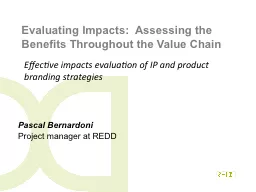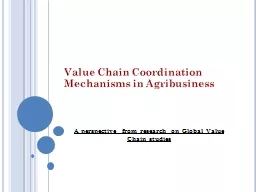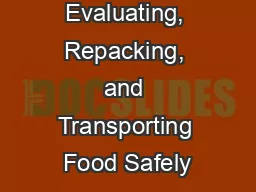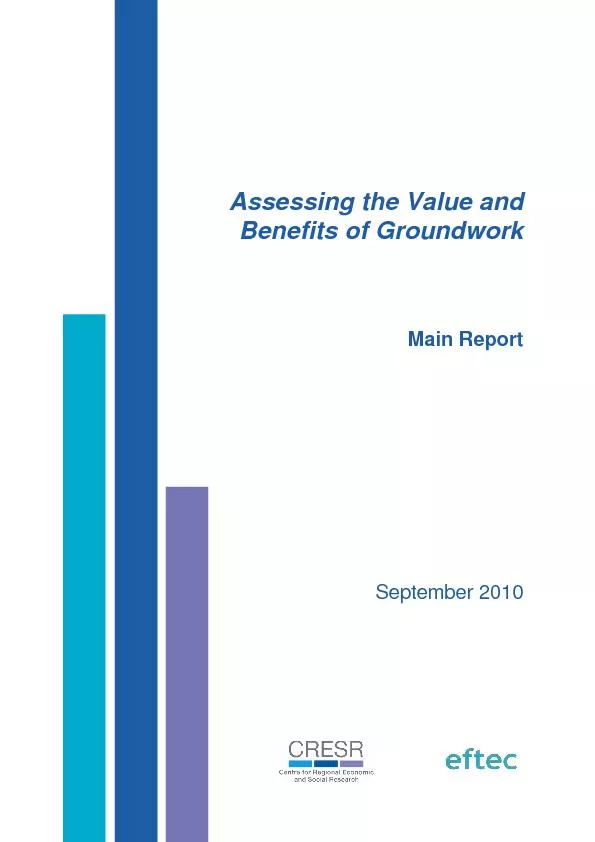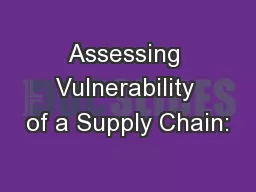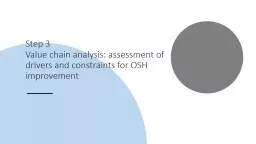PPT-Evaluating Impacts: Assessing the Benefits Throughout the Value Chain
Author : limebeauty | Published Date : 2020-06-19
Pascal Bernardoni Project manager at REDD Effective impacts evaluation of IP and product branding strategies Themes of the presentation Various purposes for
Presentation Embed Code
Download Presentation
Download Presentation The PPT/PDF document "Evaluating Impacts: Assessing the Ben..." is the property of its rightful owner. Permission is granted to download and print the materials on this website for personal, non-commercial use only, and to display it on your personal computer provided you do not modify the materials and that you retain all copyright notices contained in the materials. By downloading content from our website, you accept the terms of this agreement.
Evaluating Impacts: Assessing the Benefits Throughout the Value Chain: Transcript
Download Rules Of Document
"Evaluating Impacts: Assessing the Benefits Throughout the Value Chain"The content belongs to its owner. You may download and print it for personal use, without modification, and keep all copyright notices. By downloading, you agree to these terms.
Related Documents

